-
Wed 29th May 2013 20:07 #1 / 9
This thread is to provide somewhat of a music theory crash-course for anyone playing on this map that doesn't have any pre-existing musical knowledge.
The first scenario, "Basic Theory", is fairly self-explanatory, while the others will require a bit of understanding to be successful.
Rules that apply to all scenarios -
You may attack any key that touches your own as well as any octave above or below you. These octaves, or "pitch classes", are notes with the same name. For example, you may attack from any "C" to any other "C":
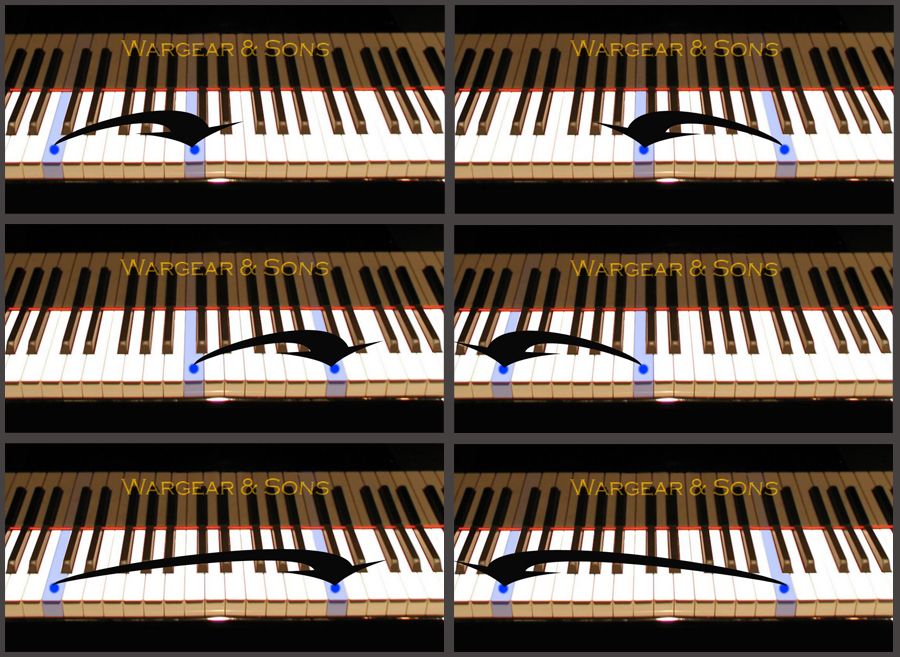
Advantages and disadvantages to attacking in this manner will vary from scenario to scenario. Some favor these attacks, others make them a bit more difficult.
Basic Theory -
This scenario is essentially a "hordes" setup. Holding all of the keys that touch (not just border, as octaves are also borders) a given key will grant you a bonus. For example:
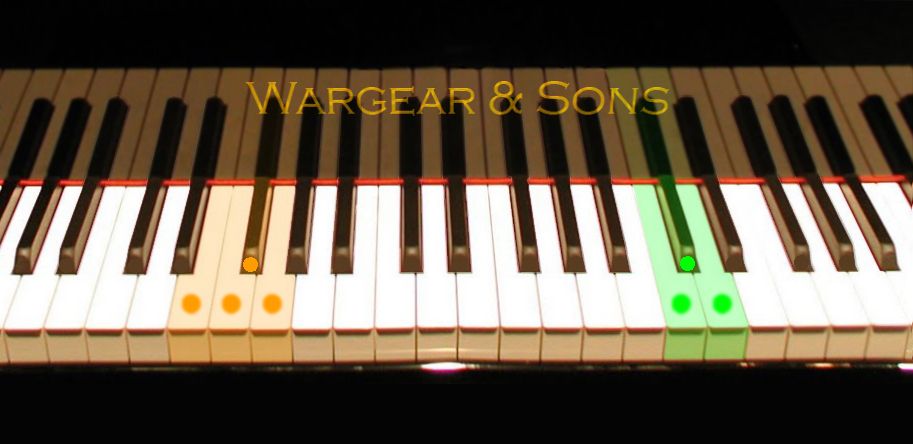
Either of these clusters will grant you a +1 bonus. (the orange cluster will actually grant two bonuses, +1 for all of the keys touching the second key from the left, "F", and +1 for all of the keys surrounding the black key, "F#".)
Attacking in octaves in this scenario is a 5 vs 6 scenario, giving the attacker a disadvantage.
I will update with the other two (more complicated) scenarios later this week.
Edited Wed 29th May 20:24 [history]
-
Wed 29th May 2013 20:25 #2 / 9
Does anyone know if there's a way to embed GIF files into these threads? I made a fancy one to display how the octave attacks work, but it doesn't seem to play once it's in the thread...
-
 Thu 30th May 2013 17:41 #3 / 9
Thu 30th May 2013 17:41 #3 / 9
Scales and Chords -
This scenario grants +5 bonuses for holding any 1-octave Major Scale. A major scale will consist of 8 specific territories spanning one octave. There are a total of 25 major scales possible on this map. Here is an example of one major scale, the D-Major Scale:
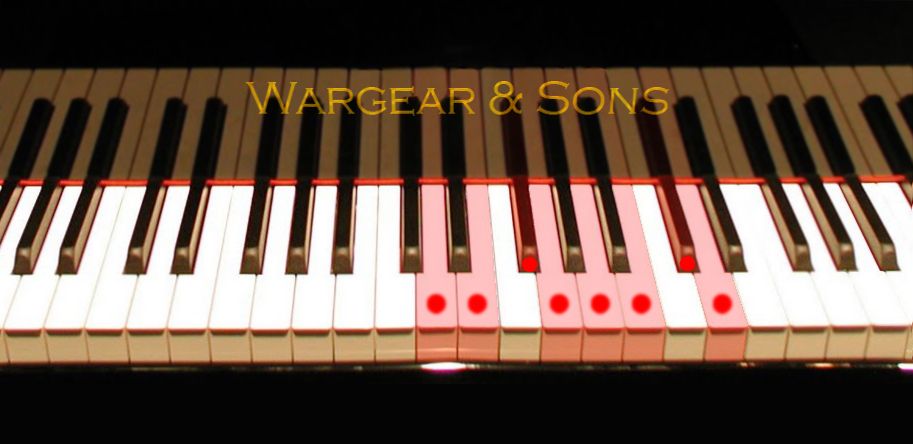
Notice that it starts and ends on a D. There are 12 major scales in Western music:
A-Major = A, B, C#, D, E, F#, G#, A
Bb-Major = Bb, C, D, Eb, F, G, A, Bb
B-Major = B, C#, D#, E, F#, G#, A#, B (this can also be called "Cb-Major", but that's not important)
C-Major = C, D, E, F, G, A, B, C
Db-Major = Db, Eb, F, Gb, Ab, Bb, C, Db
D-Major (pictured above) = D, E, F#, G, A, B, C#, D
Eb-Major = Eb, F, G, Ab, Bb, C, D, Eb
E-Major = E, F#, G#, A, B, C#, D#, E
F-Major = F, G, A, Bb, C, D, E, F
F#-Major = F#, G#, A#, B, C#, D#, E# ("F", for the purposes of this game), F#
G-Major = G, A, B, C, D, E, F#, G
Ab-Major = Ab, Bb, C, Db, Eb, F, G, Ab
Securing these sequences IN THIS ORDER and starting on the correct notes (e.g. F-Major must start on "F") will grant you a +5 bonus.
Additionally, players may earn bonuses for securing major Chords, aka "triads". These triads are the 1st, 3rd, and 5th notes of any given scale. Any combination of these three pitches inside an octave will give the player a +2 bonus. We'll use D-Major again for an example. The D-Major chord consists of D, F#, and A:

This will get you your +2 bonus, however, you can also get the same bonus by rearranging the pitches as long as they stay within the span of an octave. For example, both of these will grant you the same bonus:
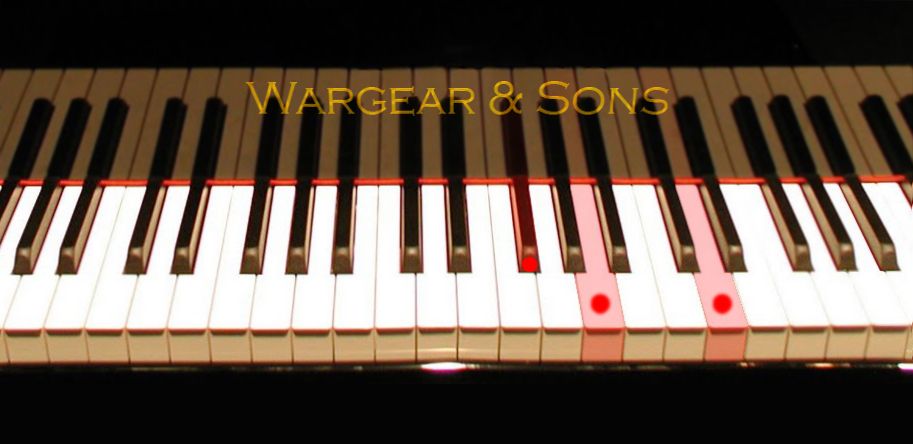

Because those are combinations of D, F#, and A... the bonus will appear.
HOWEVER - if you have a D, F#, A combination that does not stay inside of an octave, no bonus will be awarded. For example, this would not work:
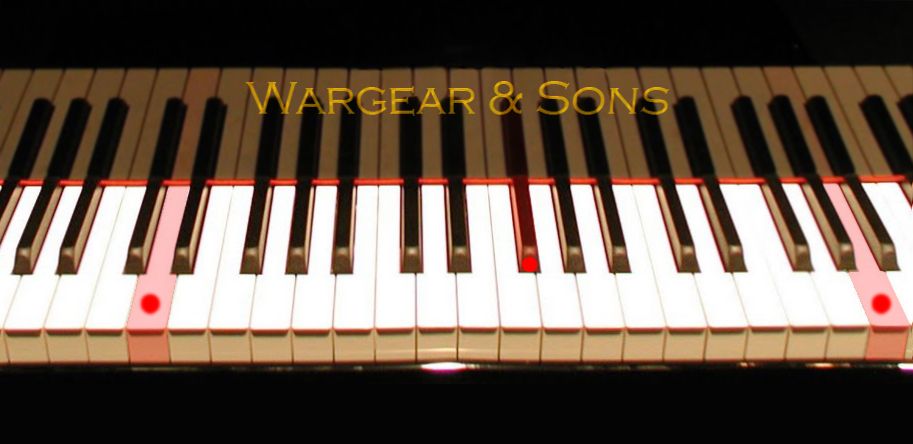
This scenario can begin to ramp up big numbers very quickly. Because of this, attacking between octaves carries an advantage to the attacker of D7vsD6. Plan accordingly.
That about covers that scenario, bringing us to the most complex scenario...
-
 Thu 30th May 2013 18:16 #4 / 9
Thu 30th May 2013 18:16 #4 / 9
Cadence Chaos -
This scenario utilizes the same scale/chord bonus structure as "Scales and Chords", but adds an auto-capture function. This scenario is complicated! I recommend getting started on the first two scenarios before attempting this one unless you consider yourself to be competent with dominant 7 chords and other basic music theory.
In Western music, the "dominant 7" chord forces the listener to expect a specific note or chord to follow immediately after. The chord that our ear wants to hear is the "1" chord, meaning the chord built on the first note of the scale. This is called an "Authentic Cadence". We have heard it in almost every piece of music that we've ever experienced without even realizing it. Imagine singing "Happy Birthday" and stopping at the end with "happy birthday toooooooooooooo......." and NOT singing the final note. The vast majority of people can't leave that note hanging in the air, and it's not the lyrics...it's the dominant 7 chord forcing your ears to want to hear that last note.
Now YOU can harness the power of the dominant 7 chord and force your opponents to hand over their notes!
The dominant 7 chord is built on the 5th note of a given scale, and has 4 pitches. In the key of C-Major, the 5th note of the scale is "G". The dominant 7 chord built on G is "G, B, D, F" This chord forces our ear to want to hear a "C" immediately following the chord. So... if you have that combination of pitches, in that order, and within an octave, all of the Cs on the board will belong to you at the beginning of the turn. It would look like this:

And the territories that you would capture are shown here in pink:
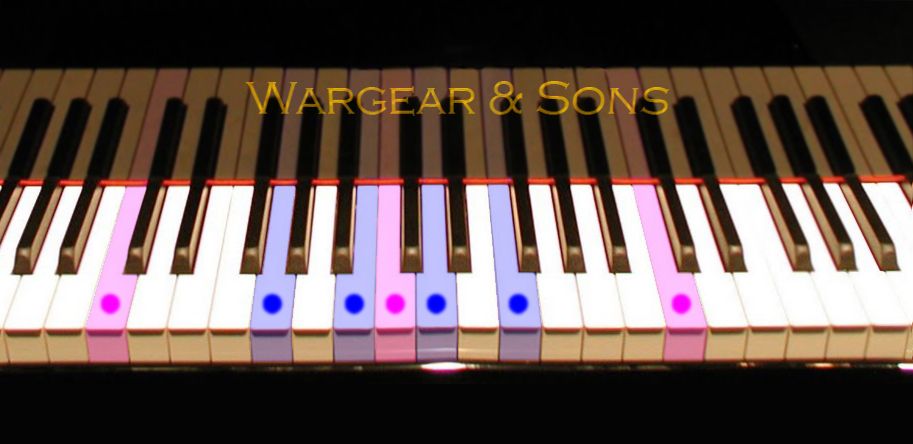
"V7 of __" is the way musicians represent the dominant 7 chord, where the "___" is filled in by the note that the dominant chord will capture. Here are all of the combinations for this map:
V7 of A = E, G#, B, D
V7 of Bb = F, A, C, Eb
V7 of B = F#, A#, C#, E
V7 of C = G, B, D, F
V7 of Db = Ab, C, Eb, Gb
V7 of D = A, C#, E, G
V7 of Eb = Bb, D, F, Ab
V7 of E = B, D#, F#, A
V7 of F = C, E, G, Bb
V7 of F# = C#, E# (F for the purposes of the game), G#, B
V7 of G = D, F#, A, C
V7 of Ab = Eb, G, Bb, Db
The notes of these chords must be in the orders listed above from left to right on the piano keyboard in order to capture.
So, There it is. Have fun, and if you have any questions, feel free to ask!
Edited Thu 30th May 18:19 [history]
-
 Fri 31st May 2013 10:03 #5 / 9
If I could figure out how to draw a line in Photoshop I would be a lot more well off with the Mac thing...
Fri 31st May 2013 10:03 #5 / 9
If I could figure out how to draw a line in Photoshop I would be a lot more well off with the Mac thing...Nice write-up and congrats on the release of the board! Nicely done with the graphics and looks like the gameplay is able to represent the real life example while still making sense and being clear and fun(which I think is a lot harder than it sounds).
-
 Sun 2nd Jun 2013 12:20 #6 / 9
Sun 2nd Jun 2013 12:20 #6 / 9
Thanks for doing all this. I've been trying to brush up on music theory and I'm hoping this will help. I did a bit more research about Major Scales, and found something that others might also find useful:
The sequence of intervals between the notes of a major scale is:
- whole, whole, half, whole, whole, whole, half
where "whole" stands for whole step, and "half" stands for half step.
In semitones, this is
- two, two, one, two, two, two, one (2 2 1 2 2 2 1)
And then a labeled set of keys to follow along with the lists below and verify the patterns above.

A-Major = A, B, C#, D, E, F#, G#, A
Bb-Major = Bb, C, D, Eb, F, G, A, Bb
B-Major = B, C#, D#, E, F#, G#, A#, B (this can also be called "Cb-Major", but that's not important)
C-Major = C, D, E, F, G, A, B, C
Db-Major = Db, Eb, F, Gb, Ab, Bb, C, Db
D-Major (pictured above) = D, E, F#, G, A, B, C#, D
Eb-Major = Eb, F, G, Ab, Bb, C, D, Eb
E-Major = E, F#, G#, A, B, C#, D#, E
F-Major = F, G, A, Bb, C, D, E, F
F#-Major = F#, G#, A#, B, C#, D#, E# ("F", for the purposes of this game), F#
G-Major = G, A, B, C, D, E, F#, G
Ab-Major = Ab, Bb, C, Db, Eb, F, G, Ab
Edited Sun 2nd Jun 12:20 [history]
-
 Sun 2nd Jun 2013 13:49 #7 / 9
https://sites.google.com/site/m57sengine/home
Sun 2nd Jun 2013 13:49 #7 / 9
https://sites.google.com/site/m57sengine/homeI'm thinking that a much simpler quartile-based scenario for non-musicians would use scales and chords that are symmetrical. Namely the diminished 7th or Octatonic scale. Because of all the tri-tones, minor seconds, and other dissonant qualities of these scales, musicians tend to not learn them until they are quite advanced and proficient. Yet, from a basic theory standpoint they are possibly the simplest of scales and chords to conceptualize.
The Three Symetrical Diminshed Scales:
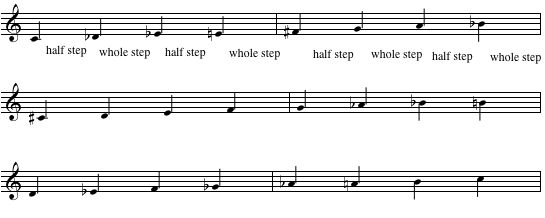
Perfectly nestled in each of the above scales are two separate diminished 7th chords (which share no common notes). What's cool about this from a game-play standpoint is that any given scale will share its two diminished 7th chords with the other two scales (one with each) E.g., "C Eb F# A" from the first scale is identical enharmonically (in all but name) to "Eb Gb A C" in the third scale. This would make for a brutal two or three person game because of the overlapping continents in each scale)
Again, with only 3 scales and 3 chords (+ inversions etc.), I wonder that this could be the easiest scenario for a non-musician to learn.
Edited Sun 2nd Jun 13:58 [history]
-
 Sun 2nd Jun 2013 18:44 #8 / 9
Sun 2nd Jun 2013 18:44 #8 / 9
Love this concept. I attempted to tackle it once, and couldn't bring myself to finish it. I applaud your work.
-
 Thu 27th Jun 2013 19:03 #9 / 9
Thu 27th Jun 2013 19:03 #9 / 9
Thanks, guys. And thanks for the labeled version, Ozyman. I had been planning to do the same, but hadn't gotten around to it yet.
As far as your suggestion, M57, I have several more scenarios in the works. Some more complicated, and some less. Whole-tone scales, octatonics, pentatonics, minor (natural, melodic, and harmonic), etc. If anyone has any cool ideas using factories and auto-capture other than what I've done in "Cadence Chaos", let me know. I'd love to try a few things out.Thanks again!










